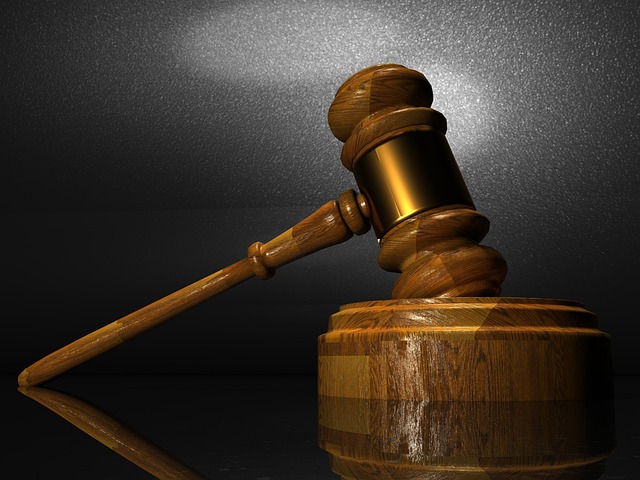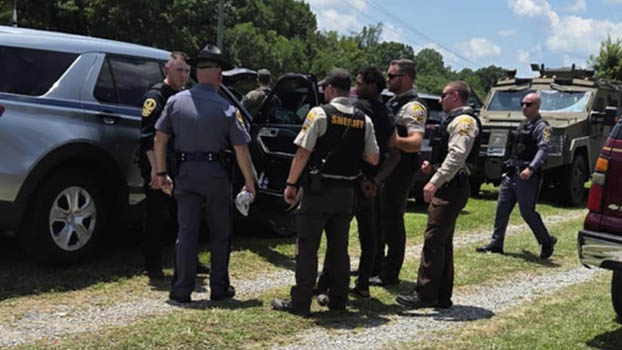Virginia Court of Appeals rules in Prince Edward flagpole case
Published 4:46 am Thursday, April 10, 2025
|
Getting your Trinity Audio player ready...
|
Carolyn Bowman will not have to remove the flagpole on her property. And Prince Edward County officials say this is the end of the appeal process, so the case appears to be over. This comes after the Virginia Court of Appeals issued a ruling on Tuesday, April 8, siding with the Bowman family in a fight that started four years ago over the size of a flagpole.
This case goes back to 2021, focused on the 60-foot flagpole at the intersection of East 3rd Street and U.S. 460. Carolyn and Corbett Bowman installed the flagpole, after getting what they believed were the proper permits, signed by all the right people. Then they put a Confederate flag on it. County officials then claimed that the pole was in violation, that it didn’t have the correct permit and said a number of errors took place, mistakes made on the county’s part, that allowed the permit to move forward.
That doesn’t change the fact the Bowman family did everything asked of them, the Virginia Court of Appeals judges wrote in their ruling. The family asked if their proposed project was allowed, went through the planning stage and involved Prince Edward officials in each step.
“This was the third level of appeal in which the Board of Supervisors had unsuccessfully sought to take down the flagpole,” said Bowman’s attorneys from Victoria-based Hawthorne & Hawthorne. “Both the Circuit Court of Prince Edward County and the Board of Zoning Appeals of Prince Edward County had previously ruled in favor of the Bowmans.”
The firm went on to congratulate Derrick P. Fellows and Bradley D. Foster, the two lawyers on the case, on their victory at the Virginia Court of Appeals.
‘This is the end’
Now yes it’s true Prince Edward officials could pursue the case further, by petitioning the Supreme Court of Virginia to hear arguments. However, Prince Edward County Administrator Doug Stanley said this case was finished.
“The Court ruled that the Bowmans had vested rights in the flagpole which will allow the flagpole to remain,” Stanley wrote in a statement to The Herald. “The Board of Supervisors was unanimous in its belief that the case should be reviewed by the Courts. While neither the County nor the County’s legal counsel necessarily agree with all of the assertions made in the ruling, this effectively ends the appeal process.”
Virginia Court of Appeals goes back to beginning
As part of the analysis, the Court of Appeals went back to the beginning of the case and walked through every step. In Nov. 2021, Susan Holyfield, a friend of the Bowman family, emailed Robert Love, who was then the assistant zoning administrator for Prince Edward. She asked about the requirements to install a flagpole. She only mentioned the property is zoned A2, but didn’t give the details of how big the flagpole would be or its location. Love then told her there were no height restrictions in A2 agricultural conservation zoning and told her to call the building code office, where officials would decide if a building permit was needed.
The Bowmans then submitted a building permit application, including their address and property parcel number, clearly describing the work as a flagpole installation. Coy Leatherwood was the building official for Prince Edward at that time and on Dec. 15, 2021, he approved the permit to move forward with the project. That permit, the Court of Appeals judges pointed out, stated “this permit is issued in accordance with the ordinance on building permits and the zoning ordinance of Prince Edward County.”
Then in January 2022, Prince Edward officials came out to the property and certified that the flagpole’s concrete footing passed inspection. That certificate listed the property as “agricultural conservation.” The Court of Appeals ruling points out it was only after getting complaints from area residents that Love issued a notice of violation to the Bowmans, regarding the flagpole.
This notice stated the Bowmans’ property was in the “general commercial (C1)” zoning district, rather than agricultural conservation, as the previous certificate stated. The notice of violation also stated that the property was being used for agricultural purposes, “which is not allowed in the C1 zoning district”. Again, this despite what was written in earlier approvals.
At the hearing for the violation, Love testified that it’s only the area where the flagpole is located which is zoned C1. The rest of the Bowmans’ property is zoned A2 agricultural conservation.
The ruling also points out that Love, in that early violation hearing, testified that only he and Doug Stanley had authority to review, issue and deny zoning permits, rather than the building official, who had issued and signed the one for the Bowmans.
Court of Appeals rules
For the Court of Appeals judges, it came down to a couple arguments. First, Prince Edward County argued that vested rights, aka the grandfather clause, only takes effect if a zoning administrator or other administrative officer makes “a written order, requirement, decision or determination.” The board argued that their building official at the time, Coy Leatherwood, was not considered as an “other administrative officer” in that case.
The Court of Appeals judges disagreed, saying the building official is considered as “other administrative officer” and so when he approved the building permit, which had the statement “this permit is issued in accordance with the ordinance on building permits and the zoning ordinance of Prince Edward County,” the Bowmans were granted vested rights by law. That means even if a law banning flagpoles like theirs came through afterward, it doesn’t matter.
The Court of Appeals judges also rejected Prince Edward’s argument that the Bowmans provided incorrect information, by stating the flagpole site was A2 instead of C1. The family moved forward based on information given by the county, the judges argued.
“There is nothing in the record that indicates the Bowmans had actual knowledge that the proposed flagpole installation violated any zoning ordinances,” the Court of Appeals judges wrote. They pointed out that even the permit issued by Prince Edward County labeled their zoning district as “agricultural conservation”, with no mention of C1 zoning at all.
“The record reflects that, at all times, the Bowmans acted in reliance on the information provided to them by county officials and with permission granted them by county officials,” the Court of Appeals judges wrote.
So what happens now?
As mentioned, the county officials have decided not to appeal the case to a higher court, so the flagpole issue is over. The second case involving the size of the flag being flown on the flagpole, remains in court. Opponents of the flag and the county say the Confederate flag exceeds the allowable height limit and is not authorized under the zoning ordinance.
Last week, a Prince Edward Circuit Court judge ruled that the flag was in violation of the zoning ordinance, as it’s too large. The Bowmans have appealed this ruling and so we’re waiting for a court date to be set for that case in the Court of Appeals.





